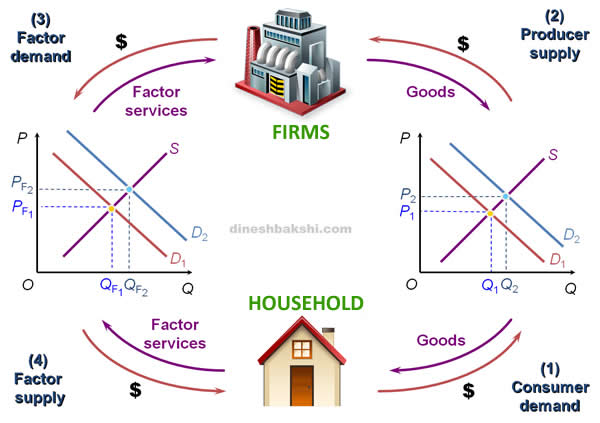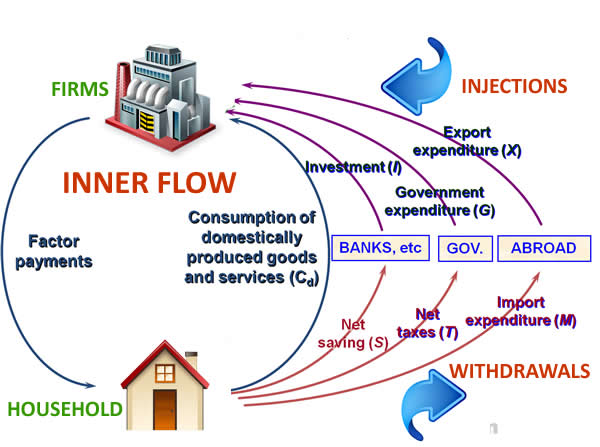Macroeconomics deals with the economy as a whole; it examines the behavior of economic aggregates such as aggregate income, consumption, investment, and the overall level of prices.
Aggregate behavior refers to the behavior of all households and firms together.
We can use macroeconomic analysis to:
• Understand why economies grow.
• Understand economic fluctuations.
• Make informed business decisions.
Lets start with a simple model of how economy works.

The economy is divided into two sectors i.e. households and firms
The households provide factors of productions (land, labour, capital and enterprise) to the firms. The firms in return pays the factors of production (wages, rent, interest and profit).
The firms produce goods and services which are consumed by the household. The households spend money on purchasing the goods and services produced by the firms (consumer expenditure).
The clockwise flows of goods and services through these markets are balanced by counter clockwise flows of payments. Households make payments for the things they buy in product markets. Firms make factor payments—wages, interest payments, rents, royalties, and so on—in exchange for the labour services and other resources they buy.

Financial Institutions
This sector consists of all those institutions that are engaged in the borrowing and lending of money, acting as the intermediaries between those who save, and borrowers of money.
Financial institutions are needed for individuals and firms to be able to undertake saving and investment. They perform the function of mobilising savings for investment.
Savings: leakage; Investment: injection
Government
Households in this model are required to pay taxes. When the government receives these taxes they then spend them (government spending) on building roads, paying soldiers, and teachers and so on. In this model the total amount of expenditure is equal to consumption plus investment plus government spending.
Watch a Video





